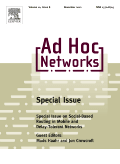
Ad Hoc Networks
Scope & Guideline
Exploring the Future of Wireless Connectivity
Introduction
Aims and Scopes
- Mobile Ad Hoc Networks (MANETs):
Research in this area focuses on the design, optimization, and performance evaluation of mobile ad hoc networks, including routing protocols, network topology, and resource management strategies. - Vehicular Networks (VANETs):
The journal covers studies on vehicular networks, addressing challenges such as communication protocols, traffic management, and security issues within intelligent transportation systems. - Internet of Things (IoT):
Research on IoT encompasses various applications and challenges, including resource allocation, security, and communication protocols tailored for IoT devices in diverse environments. - Edge Computing:
The journal explores the integration of edge computing with mobile networks, focusing on task offloading, latency reduction, and efficient resource utilization. - Security and Privacy:
Studies on security mechanisms, intrusion detection systems, and privacy-preserving protocols in wireless networks are prevalent, addressing the growing concerns of cyber threats. - Artificial Intelligence and Machine Learning:
The application of AI and machine learning techniques in optimizing network performance, intrusion detection, and resource management is a key focus area. - Energy Efficiency and Sustainability:
Research dedicated to energy-efficient protocols, sustainable network designs, and the impact of renewable energy sources on wireless networks.
Trending and Emerging
- Federated Learning and AI Integration:
There is a growing trend towards integrating federated learning and AI techniques in network management, security, and resource optimization, reflecting the need for intelligent systems in dynamic environments. - Blockchain Technology in Networking:
Research focusing on blockchain applications in enhancing security, data integrity, and trust in ad hoc and IoT networks is rapidly increasing, highlighting its potential to revolutionize network operations. - 5G and Beyond Technologies:
With the advent of 5G, there is a significant emphasis on research that explores its implications for network architecture, low-latency communications, and enhanced user experiences. - Sustainable Networking Solutions:
Emerging themes around energy-efficient protocols and sustainable practices in networking are increasingly prominent, driven by global concerns about energy consumption and environmental impact. - Cybersecurity Innovations:
As cyber threats evolve, there is an increasing focus on innovative security solutions, including AI-driven intrusion detection and privacy-preserving mechanisms in wireless networks. - UAV and Drone Communication Systems:
Research on UAV-assisted networks is expanding, focusing on their applications in emergency response, surveillance, and data collection, reflecting their growing importance in various sectors.
Declining or Waning
- Traditional Routing Protocols:
While routing protocols remain crucial, the focus has shifted towards more adaptive and intelligent routing strategies, such as those based on machine learning. Consequently, traditional protocols are being explored less frequently. - Basic Network Topology Analysis:
There has been a noticeable decline in publications focusing solely on basic network topology analysis without integrating advanced concepts such as AI or edge computing, which are now more prevalent. - Static Network Models:
Research that solely relies on static models for network analysis is waning as researchers increasingly adopt dynamic and context-aware approaches to address real-world challenges. - Legacy Wireless Standards:
Studies centered around legacy wireless standards are decreasing, as researchers focus more on emerging technologies such as 5G and beyond, which offer enhanced capabilities and performance.
Similar Journals

Annals of Telecommunications
Empowering researchers to shape the future of communication.Annals of Telecommunications is a prestigious peer-reviewed journal published by SPRINGER INT PUBL AG, dedicated to advancing the field of electrical and electronic engineering. Established in 1946, this journal presents a comprehensive collection of research articles that address the latest trends and developments in telecommunications, including innovative technologies, systems, and applications. With an impressive Q2 ranking in the 2023 category of Electrical and Electronic Engineering and a Scopus rank in the 68th percentile, the journal serves as a vital platform for researchers, professionals, and students looking to disseminate groundbreaking findings and engage with contemporary challenges in the field. Although it is not an Open Access journal, it offers a wealth of knowledge that contributes to both academic and practical advancements in telecommunications. The Annals of Telecommunications remains an essential resource for anyone involved in telecommunication research and practice, fostering collaboration and knowledge exchange globally.
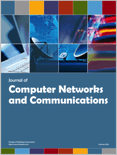
Journal of Computer Networks and Communications
Elevating Standards in Networking ResearchThe Journal of Computer Networks and Communications is a premier open-access journal published by HINDAWI LTD, dedicated to advancing the field of computer networks and communications. With an ISSN of 2090-7141 and an E-ISSN of 2090-715X, this journal has been accessible to researchers since its inception in 2011, promoting widespread dissemination of knowledge in this rapidly evolving discipline. Based in Egypt, the journal's editorial standards are upheld through a rigorous peer-review process, contributing to its strong academic reputation. As of 2023, it holds a commendable Q2 ranking in Computer Networks and Communications and a Q3 ranking in Information Systems within its category quartiles. According to Scopus rankings, it occupies the 141st and 143rd positions in its respective fields, showcasing its relevance and influence in the academic community. The journal's mission is to publish high-quality research that addresses contemporary challenges in networking technologies and systems, making it an essential resource for researchers, professionals, and students seeking to innovate and excel in these fields.
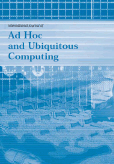
International Journal of Ad Hoc and Ubiquitous Computing
Connecting Ideas in Ad Hoc and Ubiquitous ComputingThe International Journal of Ad Hoc and Ubiquitous Computing, published by InderScience Enterprises Ltd, is a premier platform dedicated to advancing the fields of computer networks, communication systems, hardware, and software architecture. Since its inception in 2005, this journal has served as a critical resource for researchers, professionals, and students aiming to explore the intricate dynamics of ubiquitous computing and ad hoc networks. Though currently not an open-access journal, its scholarly contributions are well-recognized, as evidenced by its rank in the Scopus database, which places it within the lower quartiles of its respective categories. With an increasing focus on innovative solutions in computer science, the journal aims to facilitate knowledge dissemination and encourage interdisciplinary collaborations. Researchers are particularly drawn to the journal for its comprehensive coverage of emerging technologies, making it an invaluable asset in a world increasingly reliant on sophisticated communication infrastructures. As it continues to thrive towards 2024, the journal remains committed to fostering a vibrant academic community.

International Journal of Networked and Distributed Computing
Unveiling the Future of Distributed IntelligenceWelcome to the International Journal of Networked and Distributed Computing, published by SpringerNature, a premier outlet for cutting-edge research in the realms of computer networks and distributed computing systems. Established as an Open Access journal since 2013 and based in the Netherlands, this publication strives to disseminate high-quality, peer-reviewed studies that address the complexities of contemporary computing challenges. With an impact factor that reflects its growing influence—positioned in the Q3 category for both Computer Networks and Communications and Computer Science Applications—this journal serves as a pivotal resource for scholars and practitioners aiming to advance knowledge and innovation in this rapidly evolving field. The journal encompasses diverse topics, from network protocols to distributed algorithms, ensuring that researchers, professionals, and students can find relevant insights and methodologies to inform their work. Join us in exploring the depths of networked and distributed computing, contributing to a collaborative academic environment that shapes the future of technology.

Journal of Electrical and Computer Engineering
Fostering Collaboration in a Dynamic Engineering LandscapeJournal of Electrical and Computer Engineering is a premier open-access journal published by HINDAWI LTD, dedicated to advancing the fields of electrical and computer engineering. With an ISSN of 2090-0147 and an E-ISSN of 2090-0155, this journal has been providing a platform for cutting-edge research since its inception in 2007. Based in the United States, it operates from its address at ADAM HOUSE, 3RD FLR, 1 FITZROY SQ, LONDON W1T 5HF, ENGLAND. The journal has established itself with a healthy impact factor, classified in the 2023 Q2 quartile for both Computer Science (Miscellaneous) and Electrical and Electronic Engineering, demonstrating its growing influence in the academic community. Additionally, its ranking positions it within the 67th percentile in General Computer Science and the 61st percentile in Electrical and Electronic Engineering on Scopus, indicating its significant contribution to these fields. Covering an extensive scope from 2010 to 2024, the journal seeks to publish innovative research articles, reviews, and case studies that explore new techniques and applications in electrical and computer engineering, benefiting a wide audience of researchers, professionals, and students focused on these rapidly-evolving areas.
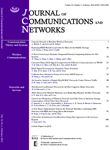
JOURNAL OF COMMUNICATIONS AND NETWORKS
Advancing the Frontiers of Communication and NetworkingJOURNAL OF COMMUNICATIONS AND NETWORKS, published by the Korean Institute of Communications Sciences (KICS), is a leading academic journal that has been at the forefront of the fields of Computer Networks and Communications as well as Information Systems since its inception in 1999. With a strong commitment to advancing research in these critical areas, this journal has achieved a prestigious Q1 ranking in both domains as of 2023, reflecting its significant impact and innovative contributions to the field. The journal features original research, review articles, and technical notes that address the latest advancements in communication technologies, network architecture, and data management strategies. As a vital resource for researchers, practitioners, and students, it not only disseminates valuable findings but also fosters collaboration and knowledge exchange among diverse disciplines within the communications landscape. With a consistent annual volume, the journal continues to shape the future of communications science and offers authors an esteemed platform to showcase their work.
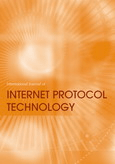
International Journal of Internet Protocol Technology
Illuminating Pathways in Communication TechnologyThe International Journal of Internet Protocol Technology (ISSN: 1743-8209; E-ISSN: 1743-8217), published by InderScience Enterprises Ltd, is an esteemed periodical dedicated to advancing research in the realms of internet protocols and communication technologies. Established in 2005 and headquartered in the United Kingdom, this journal serves as a vital platform for scholars and professionals, providing insights into innovative approaches and emerging trends within the field. With a 2023 Scopus ranking placing it in the Q4 category for Computer Networks and Communications, it continues to contribute to an evolving digital ecosystem. Although the journal does not offer open access, its articles are accessible through institutional subscriptions and provide a wealth of knowledge that aids the understanding and development of internet protocols. Researchers, practitioners, and students will find a range of high-quality studies that explore critical issues and technological advancements shaping global digital communications.
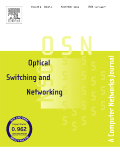
Optical Switching and Networking
Pioneering Research in Optical SwitchingOptical Switching and Networking is a prestigious academic journal published by ELSEVIER, focusing on cutting-edge research and developments in the field of optical communications and networking. With an impressive impact factor and quartile ranking, this journal is recognized as a vital resource for professionals and researchers in Computer Networks and Communications and Electrical and Electronic Engineering, positioned in the Q2 category according to the latest metrics. Aiming to foster innovation and knowledge exchange among scholars, the journal covers a diverse range of topics, from optical switching mechanisms to the latest advancements in network architecture. Researchers benefiting from its accessible content will find it an invaluable platform for advancing their work and engaging with a global community of experts. For those seeking to enhance their understanding and contribute to the academic discourse in these rapidly evolving fields, Optical Switching and Networking serves as an essential conduit for high-quality research and ideas.
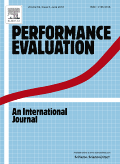
PERFORMANCE EVALUATION
Bridging Theory and Practice in Performance ResearchPERFORMANCE EVALUATION, published by ELSEVIER, is a prestigious journal that serves as a critical resource for researchers and professionals in the fields of Computer Networks and Communications, Hardware and Architecture, Modeling and Simulation, and Software. With its ISSN 0166-5316 and E-ISSN 1872-745X, this journal is recognized for its contribution to the advancement of performance assessment methodologies and empirical research. Holding a Q3 quartile ranking across multiple categories in 2023, PERFORMANCE EVALUATION is positioned as a valuable platform for disseminating high-quality studies that explore complex performance issues and innovative solutions. Operating from its base in the Netherlands, this journal emphasizes rigorous peer-review standards and enhances its relevance within the academic community by addressing crucial challenges and trends in technology. Stakeholders can access the wealth of knowledge published from 1981 through 2024 by exploring this journal, making it an essential tool for practitioners and scholars aiming to stay at the forefront of computer science research.

Ad Hoc & Sensor Wireless Networks
Shaping the future of computer science and engineering.Ad Hoc & Sensor Wireless Networks, an esteemed journal published by OLD CITY PUBLISHING INC, provides a dedicated platform for the dissemination of pioneering research in the realms of computer science, electrical and electronic engineering, and instrumentation. With an ISSN of 1551-9899 and an E-ISSN of 1552-0633, this journal has established itself as a crucial resource for scholars and practitioners alike, actively contributing to the advancements in ad hoc networks and wireless sensor technologies. It holds a commendable position within the third quartile in its respective fields, with Scopus rankings reflecting its relevance in the academic community. As a publicly accessible source of valuable insights, the journal aims to inspire innovation and facilitate progress across various disciplines. Situated in Philadelphia, PA, and converging its efforts from 2005 to 2024, Ad Hoc & Sensor Wireless Networks continues to be a beacon of research excellence, impacting both theoretical and practical domains in technology.